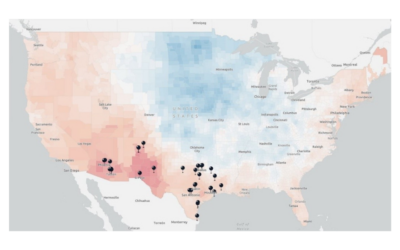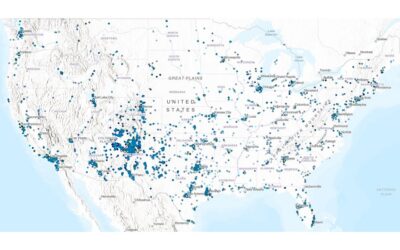By Zachary Winfield
Last Thursday Zoo Advisors hosted our first 2022 edition of our long-running Community Conversations webinar series. To kick off the new year, we asked “What’s Ahead in 2022?” to a panel of thoughtful contributors who discussed their perspectives on the trajectory of several key trends in the greater cultural attractions landscape: the economy and inflation; tourism; the supply chain; and the employment market. Panelists included:
-
James McAndrews – CEO of TNB USA, and former Executive Vice President at the Federal Reserve Bank of New York
-
Jerry Henry – CEO of H2R Market Research
-
Erik Evyen – Director of Data & Analytics at Tourism Economics/Oxford Economics
The national supply chain has been a widespread topic of conversation. Some consumers may have noticed reduced availability of certain products, and organizations that rely on certain goods to operate have experienced increased costs and delays in acquisition of key supplies.
With the Bureau of Labor Statistics recently announcing that the U.S. saw inflation of approximately 7% in December 2021 over the previous year (the highest in four decades), organizations around the industry have continued to feel the pinch of rising prices, and many are facing difficult budgeting decisions for the upcoming year. Panelist James McAndrews advised organizations to think logically about this challenge by simultaneously taking into account both the most likely scenario (that inflation should decline in the next several months to more typical levels) as well as less-likely but still possible outlier conditions when financial stresses could continue. In essence, the brightest minds in economics see an easing of current conditions in the near future, but responsible financial planners must remain nimble and ready to adapt.
>
“We’ll just have to see how the year proceeds, hoping that inflation will have seen its peak. Many, many models suggest that December was the worst month for inflation. By the end of 2022, [models suggest] inflation will be down to between three and four percent and continue to fall back to that two percent range that is the Federal Reserve’s objective in coming years. ”
On the topic of the employment market, we discussed the “Great Resignation” — the rising numbers of resignations that employers across the nation have experienced in the last 18 months. McAndrews and Erik Evyen noted that this was due to a confluence of circumstances: first, that the pandemic contributed to high numbers of near-retirement employees deciding to accelerate their move out of the workforce, but also that strong upward wage pressure (especially among lower-paying jobs) have led many employers to reevaluate future costs associated with a high-performing workforce.
Jerry Henry spoke on the outlook for the recovery of the tourism market and noted that he is already seeing signs of a strong rebound in that sector as Americans once again hit the road (or the skies).
>
“Our outlook is very encouraging. As a matter of fact, year over year, I’ve never seen as strong intent across 20 different sectors of attractions. A study we just completed indicated there’s a lot more desire to visit attractions of literally all kinds than there was in 2021. And that’s fueling desire to travel, to visit attractions, and to get out in and spend on leisure in many forms. ”
He expects that in the short term, pent-up demand for travel will mean strong industry metrics, especially in the second half of 2022. He also sounded a note of caution, reminding the audience that the pandemic may not abate for some time, and that not all guest experiences are equal. Outdoor attractions (such as botanical gardens and zoos) may see a stronger and more rapid recovery, while the book is still out on what the future holds for other organizations.
On the topic of inflation and the labor market, Henry advised visitor organizations to look closely at their primary revenue channels, particularly their admissions programs, as levers to offset significant growth in expense obligations. He specifically advised that there is a rare window right now when organizations who have never conducted primary pricing research should strongly consider it. “Consumers are at a point that they’re ready to get out, and to splurge, because they have money to spend. And they also understand in the world around us, prices are going up virtually everywhere.”
>
“We saw a huge increase in consumer spending in 2021, and that will continue to be strong in 2022. During early times in this crisis, the majority of consumer spending was on goods. But now we’re moving towards a full recovery on consumer spending on services and travel-related items, which is up about 20% over 2019 levels.”
Overall, panelists emphasized their general optimism about the continued national economic recovery over the next year. Key indicators in each of their respective areas of expertise are trending upwards, with inflation rates expected to decline in the long term; supply chain and labor challenges projected to normalize; and tourists and recreation-seekers already returning to the fold.
Our panelists left us with these closing thoughts:
“The U.S. economy has recovered very rapidly from the severe recession associated with the onset of Covid in 2020. While we still are living with the difficulties of the ongoing pandemic, rapid economic growth in 2021 has produced a strong recovery in jobs accompanied by rising inflation. While forecasts vary, I expect both growth and inflation to be above normal in 2022, but they should both subside from the extraordinary rates we saw in 2021. The major risks for 2022 include further adverse effects of the pandemic, stubbornly high inflation, and continued constraints in meeting the record demands for shipments of goods.” -James McAndrews
“Pent-up demand in the attractions industry remains at near-record levels. While 2021 provided a strong rebound in demand from 2020, as a whole industry visitation remained well below pre-pandemic levels. If, however, attraction visitors follow through on their current intentions for 2022, aggregate attractions visitation should reach or exceed 2019 demand levels by the end of the year. And given the consumer’s willingness to splurge on leisure activities, sales revenues could easily reach record levels for many operators nationwide. If we can keep the new disrupters (labor shortages, supply-chain delays, inflation, Omnicron, etc.) under control, there is good reason to expect consumers to push the attractions industry back to something much closer to “normal,” or beyond.” -Jerry Henry
If you weren’t able to attend this webinar, click here to watch the recording. Make sure to stay tuned to our Community Conversations Webinars page, where we’ll be posting information about upcoming webinars.





